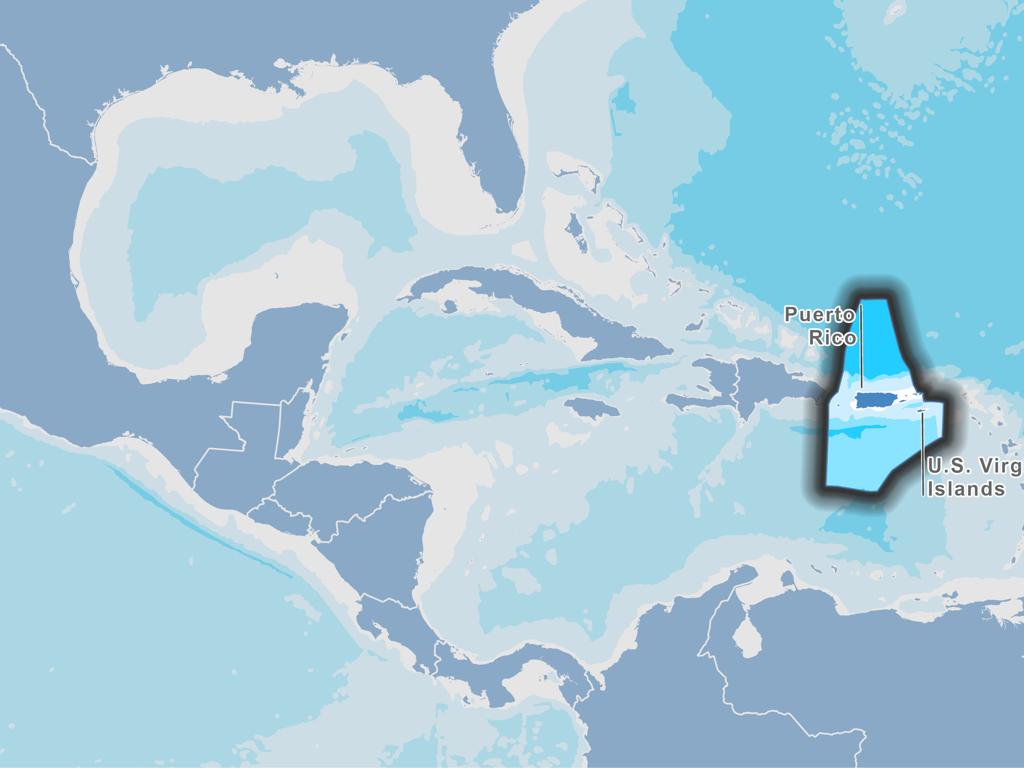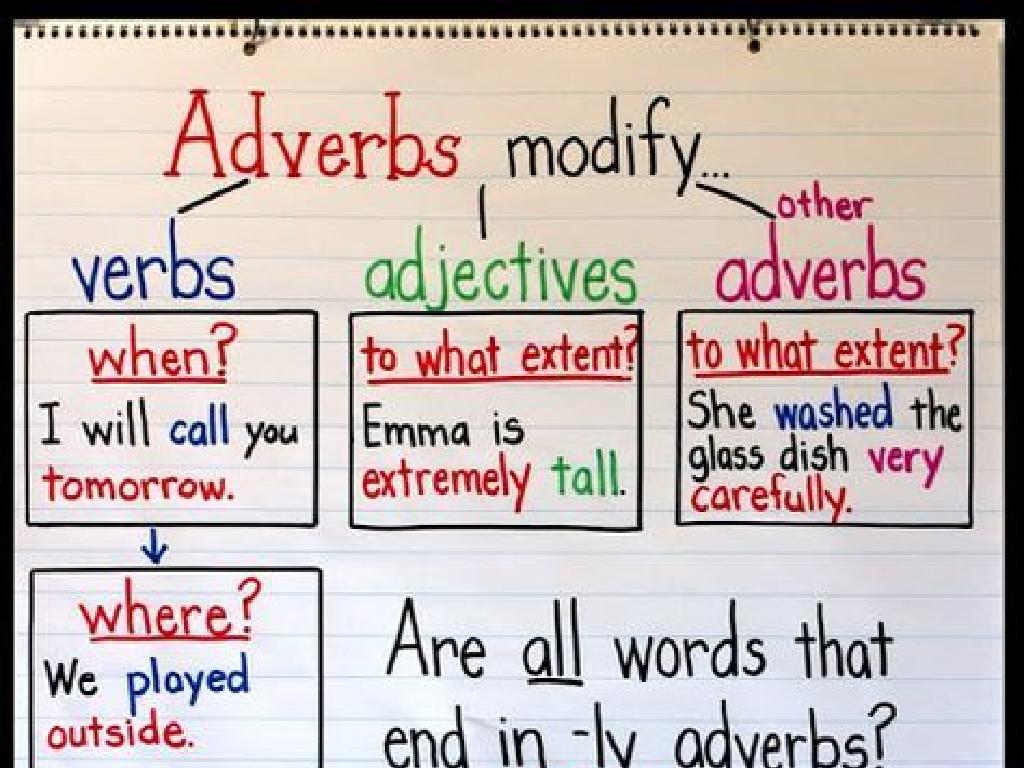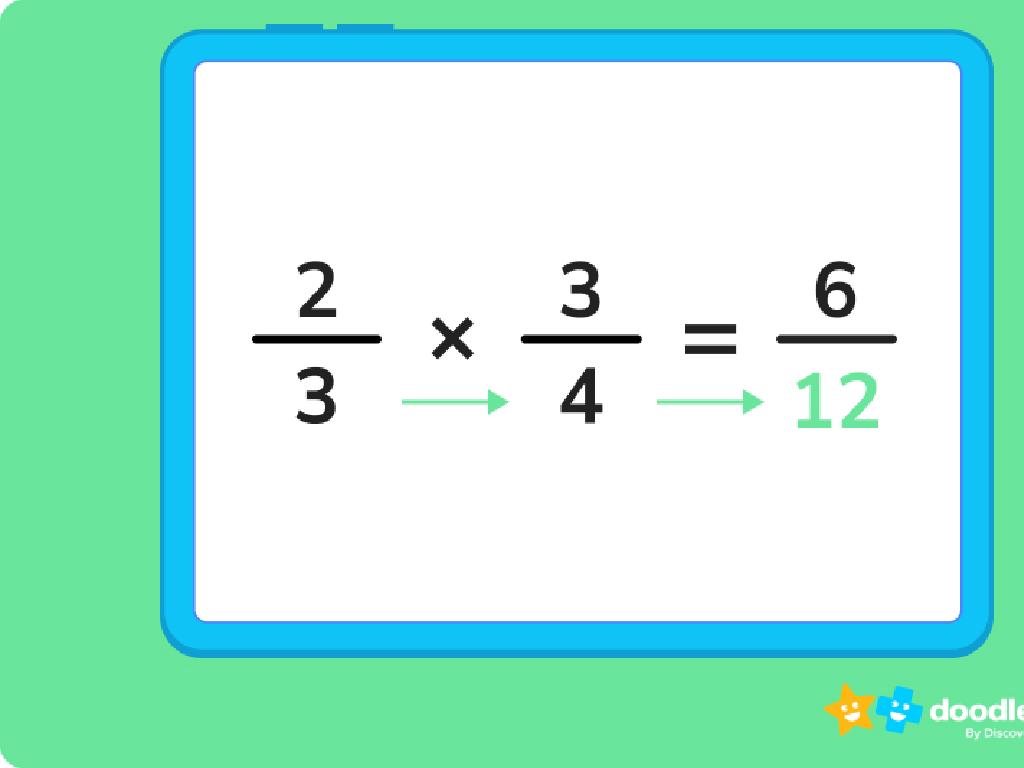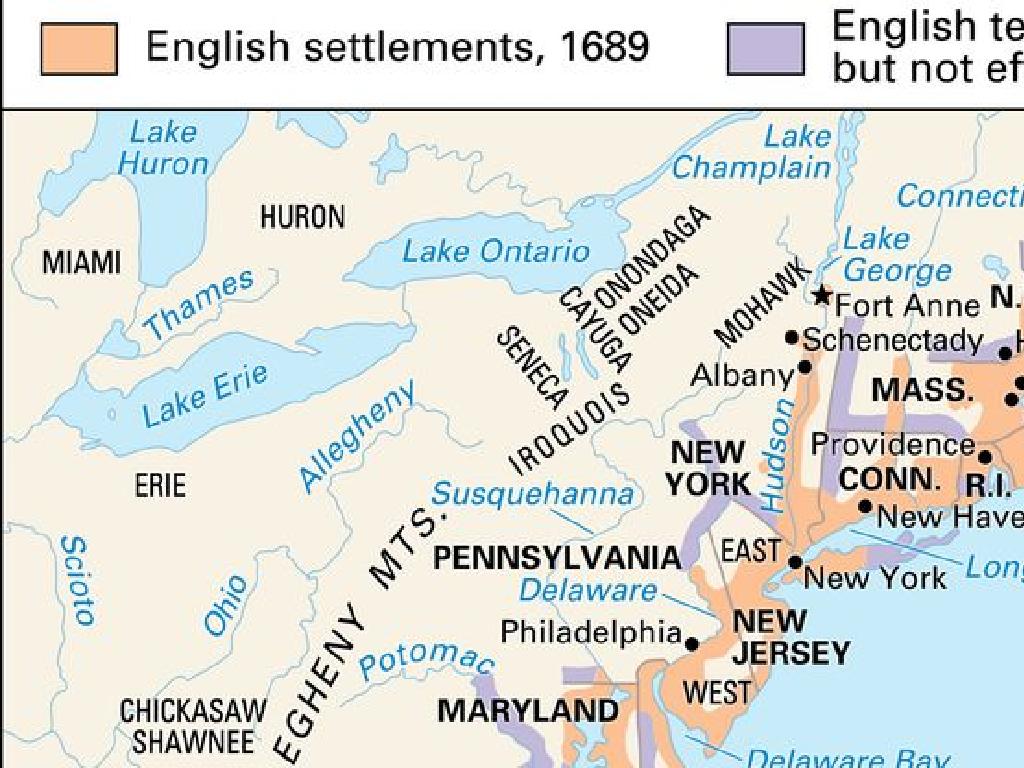Does The Word Start With A Consonant Blend?
Subject: Language arts
Grade: Kindergarten
Topic: Consonant Blends And Digraphs
Please LOG IN to download the presentation. Access is available to registered users only.
View More Content
Fun with Consonant Blends!
– Learning sounds in words
– Spotting special starting sounds
– Listen for the first sound in words like ‘bl’ in block
– Understanding consonant blends
– Two or three consonants make one sound, like ‘st’ in star
– Engaging with fun activities
|
This slide introduces the concept of consonant blends to Kindergarten students. Begin by explaining that words are made up of different sounds. Engage the students by asking them to listen for the first sounds in words. Introduce consonant blends as special sounds made when two or three consonants are combined at the beginning of words. Provide examples and emphasize the blend sound. Plan interactive activities where students can practice identifying blends, such as a picture match or a listening game where they identify the blend from words you say aloud. The goal is to make the learning process enjoyable and memorable.
Consonant Blends: Do You Hear Them?
– What’s a consonant blend?
– It’s like friends holding hands, each still waves ‘hi’!
– Two letters team up for a sound
– Like ‘bl’ in ‘block’ or ‘st’ in ‘star’
– Each letter sounds like itself
– Examples: bl, st in words
– ‘bl’ makes the sound in ‘block’, ‘st’ is heard in ‘star’
|
Introduce the concept of consonant blends to the students by comparing them to two friends holding hands, where each friend is still able to wave ‘hi’. Emphasize that in consonant blends, each letter maintains its own sound even when paired with another. Use visual aids like blocks and stars to illustrate the ‘bl’ and ‘st’ sounds. Encourage the children to practice making the sounds of the blends and to come up with other words that start with the same blends. This will help them recognize and pronounce blends in their reading.
Listening for Consonant Blends
– Listen to words as a group
– Clap when you hear a consonant blend
– Blends are two letters making one sound like ‘sn’ in ‘snail’
– Examples: ‘snail’, ‘truck’, ‘grass’
– ‘sn’ in ‘snail’, ‘tr’ in ‘truck’, ‘gr’ in ‘grass’
– Practice makes perfect!
|
This slide is for a class activity focused on listening for consonant blends at the beginning of words. Start by explaining what consonant blends are: two or more consonants together that each make a sound, which are heard in the blend. Play a game where you say words out loud and students clap when they hear a word that starts with a consonant blend. Use words like ‘snail’, ‘truck’, and ‘grass’ as examples. Encourage the children to listen carefully and practice saying the words themselves. This activity helps students recognize and understand consonant blends, which is an important skill for reading. Make sure to praise their efforts and correct gently, ensuring a positive learning experience.
Practice Time: Consonant Blend Game
– Listen to the word I say
– Does it start with a consonant blend?
– Consonant blends are two letters making one sound, like ‘bl’ in ‘block’
– Thumbs up for ‘Yes’
– Thumbs down for ‘No’
|
This slide is for an interactive class activity to help Kindergarten students recognize consonant blends at the beginning of words. As the teacher, you will say a word out loud, and the students will respond with a thumbs up if the word starts with a consonant blend or thumbs down if it does not. Before starting the game, review what consonant blends are and give a few examples. During the activity, say words with and without consonant blends, such as ‘slide’ (thumbs up) and ‘elephant’ (thumbs down). Encourage the students to listen carefully and participate. After the game, discuss why certain words were thumbs up or thumbs down to reinforce their understanding.
Consonant Blend Matching Game
– Match words to their pictures
– Identify consonant blends
– Blends are two letters making one sound, like ‘bl’ in block
– Drag words to correct pictures
– If ‘snail’ starts with ‘sn’, it matches the snail picture
– Have fun learning sounds!
|
This interactive activity is designed to help Kindergarten students recognize consonant blends at the beginning of words. Provide a variety of words and corresponding pictures, ensuring that some words start with consonant blends while others do not. Instruct students to drag words that start with consonant blends to the matching picture. For example, ‘block’ would be dragged to a picture of a block because it starts with the consonant blend ‘bl’. This activity will reinforce their understanding of consonant blends in a playful and engaging way. Possible variations of the activity could include using physical cards in a classroom setting or an interactive whiteboard with drag-and-drop capabilities.
Let’s Find Consonant Blends
– What are consonant blends?
– Two letters make one sound, like ‘sm’ in ‘smile’
– Circle consonant blends in words
– Use a crayon to circle ‘sm’ in ‘smile’, ‘pl’ in ‘plant’
– Examples: ‘smile’, ‘plant’
– ‘br’ in ‘bread’ is also a blend. Can you find more?
– Recognizing blends helps reading
|
This slide is aimed at helping Kindergarten students recognize and understand consonant blends, which are two or more consonants combined to make a distinct sound. Start by explaining what consonant blends are with examples. Then, engage the students in an interactive activity where they circle the consonant blends in given words. Use visual aids like pictures associated with the words ‘smile’, ‘plant’, and ‘bread’ to help them connect the blends with familiar objects. Encourage the students to pronounce the words out loud to reinforce the blend sounds. This activity will aid in improving their phonetic skills and reading fluency.
Story Time: Listen for Consonant Blends
– I’ll read a story aloud
– Listen for words with consonant blends
– Blends are two letters like ‘bl’ in ‘block’
– Raise your hand when you hear one
– We’ll find blends together
– It’s like a word treasure hunt!
|
This interactive story time is designed to help Kindergarten students recognize consonant blends in words. As you read the story, emphasize words with consonant blends. Pause briefly after such words to give students a chance to raise their hands. This activity not only makes them active listeners but also enhances their phonemic awareness. After the story, discuss the words they identified and point out the blends in each. You can extend the activity by having students come up with other words that start with the same blends or by creating a wall chart with their findings.
Create Your Own Word with Consonant Blends
– Be creative with letter cards
– Make words starting with blends
– Blends are two letters like ‘bl’, ‘cr’, ‘st’
– Share your blend word with friends
– What fun blend words can you make?
– Listen to others’ blend words
– Hear how blends sound in classmates’ words
|
This slide is for a class activity that encourages students to apply their knowledge of consonant blends. Provide letter cards to the students and ask them to form words that start with consonant blends such as ‘bl’, ‘cr’, ‘st’, ‘fl’, etc. This hands-on activity helps reinforce their understanding of how blends work. After creating their words, each student will have the opportunity to share their word with the class, promoting active participation and listening skills. For the teacher: Prepare a set of letter cards for each student. Monitor the students as they create words, and assist them if they struggle with forming blends. Have a list of example words with consonant blends ready to prompt students if needed. Encourage students to listen carefully as their peers share, and to celebrate each new word created.
Class Activity: Consonant Blend Hunt
– Let’s search for consonant blends
– Find objects with consonant blends
– Look for objects like ‘truck’ or ‘flower’
– Work together in pairs
– Make a list of your blend words
– Write down words like ‘stool’, ‘grapes’
|
This activity is designed to help Kindergarten students recognize and understand consonant blends in a fun and interactive way. Set up the classroom with various objects that start with different consonant blends. Explain to the students what consonant blends are with examples. Then, instruct them to work in pairs to look around the room and find objects that start with consonant blends such as ‘bl’ in ‘block’ or ‘tr’ in ‘truck’. Each pair should have a paper to list down the words they find. After the hunt, regroup and discuss the words they found. This will help reinforce their understanding of consonant blends and encourage teamwork and communication skills. Provide guidance and support as they work through the activity.
Review and Goodbye: Consonant Blends
– Recap of today’s consonant blends
– We learned blends like ‘bl’, ‘cr’, ‘st’, and more.
– Practice saying blend words
– Can you say ‘block’, ‘crab’, ‘stop’?
– Praise for today’s learning
– Looking forward to next class
|
As we conclude today’s lesson on consonant blends, start by reviewing the blends covered in class. Encourage the children to recall the blends and practice them together. Ask the students to articulate words that begin with these blends to reinforce their learning. Offer praise to acknowledge their hard work and progress throughout the lesson. Finally, express enthusiasm about seeing them in the next class, leaving them excited and motivated. Remember to keep the tone light and encouraging, fostering a positive learning environment.





/mla_format_works_cited.png)
